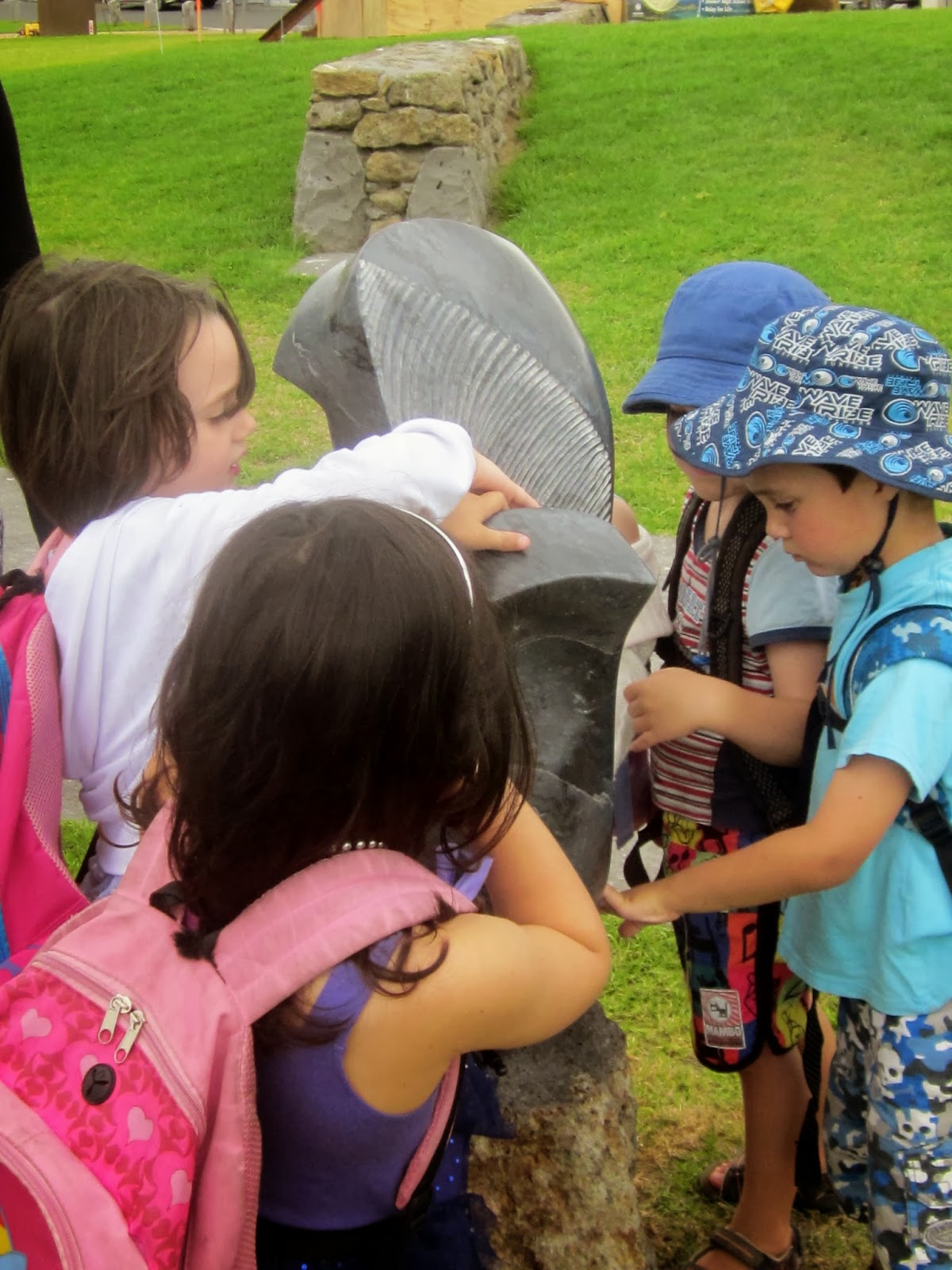A couple of weeks
ago, one of our children, Thomas, brought in a live centipede (in a jar) that
he had found in his garden over the weekend.
Since then bugs have become a huge source of interest for many of our children,
and interestingly sparked some further bug hunting. We now have quite a collection consisting of
a cricket, lots of cicada shells, three cockroaches, 2 dead cicadas, a dried
centipede, a scarab beetle, a dragon fly and a weta.
Examining and
discussing the have bugs proved to totally capture the children’s interest; as
more children become involved and share their thoughts, ideas and theories
about these creatures, this in turn sparks more interest amongst our other
children.
Collaborative
learning in small groups aids the exchange of ideas, increases interest among the
participants and also promotes critical thinking (Gokhale, 1995).
).
As I talked to the children and encouraged their dialogue, they asked many interesting and thoughtful questions. Is it dead? Will it come back to life
again? Does it have eyes? How long does it live? What does it eat? Is it going
to bite me?
The more they talked, questioned, hypothesised, compared and reasoned it became clear this was going to be a wonderful opportunity to work with the children in extending their scientific thinking.
Many people misinterpret what science is in an early childhood context. As Wilson states “Knowing the right answer…is not one of the primary objectives of science in the early childhood curriculum. Knowing the right answer, requires no decisions, carries no risks, and makes no demands. It is automatic. It is thoughtless. A far more important objective is to help children realize that answers about the world can be discovered through their own investigations”.
So how do we do this? Clearly we all now
know how naturally curious children are, their questions and theories flow
freely. Childhood is a special time when we aren’t as afraid as adults to make mistakes; children's questions and ideas should be
nurtured, encouraged and valued. As their teacher I can certainly assist in
fostering our children’s scientific thinking by asking questions of my own.
Known as productive questions, these help bridge the gap between what children
already know and what they experience, it takes children forward in their
thinking.
 |
| Lead by the question, what does it eat? Here is one of our cockroaches eating some biscuit... |
Some examples of the productive questions I
have been asking these past few weeks are; What is it doing? How does it feel? How
are they different/alike? What if…..? How could we…? What do you think? Can
you explain that?
In completing our research and to help with our discoveries we have used the internet, books, our microscope (a favourite with the children and a wonderful tool for further extending children’s thinking and engagement with our bugs) and of course magnifying lenses and sheets.
Many children have also chosen to answer some of their questions through completing observational drawing. Observational drawing is a
tool we use frequently at Mairtown and assists children in looking at the
finer elements of specific objects in more detail often leading to joyous discoveries.
Look at this wonderful dialogue from Marcus as he drew a centipede. You can almost see the different stages of his thinking
as he questions, reasons and works through his ideas.
“I
always knew centipedes had a long body, but now I know they have lines on the
body. Oh and at the head they don’t have lines, the legs are long and look like
a circle. Where are the eyes? I can’t
see the eyes. I think they have eyes as eyes make things see.” We move onto talking about what they eat. “Can they eat elephants? I don’t know. Elephants are super big so they
couldn’t probably eat elephants. These pincey ones (antennas) are for killing food I think. Do they have
mouths, oh yeah; they must do because they eat it. (Looking carefully) oh yes I can see some teeth so they do have
mouths. These are for banging people away (talking about the antennae) so when
they bang into things, so they don’t have eyes, so they just know where they are
going, so when they bang into things they just eat them. I haven’t actually
seen centipedes before. I don’t know where they live, maybe bushes; there are
no bushes at my place so there are no centipedes at my place.”
 |
| Emma's scarab beetle |
“Children are naturally curious about the world and
want to find out as much as they can. They want to know what makes the wind
blow, how trees grow, why fish have fins, and where turtles go in the winter.
But they don’t want adults to give them the answers. They want to be the
discoverers, the experimenters, and the theory builders. They don’t want
science to be something that is imparted to them; they want it to be something
that they do. They want to be scientists; not just consumers of science. They
want to ask their own questions, collect their own data, and arrive at new and
wonderful ideas. These “wants” should shape the foundation of an early
childhood science curriculum.” Wilson
I am looking forward to seeing where our
investigations will take us this coming week…..
Nga mihi,
Christine








































